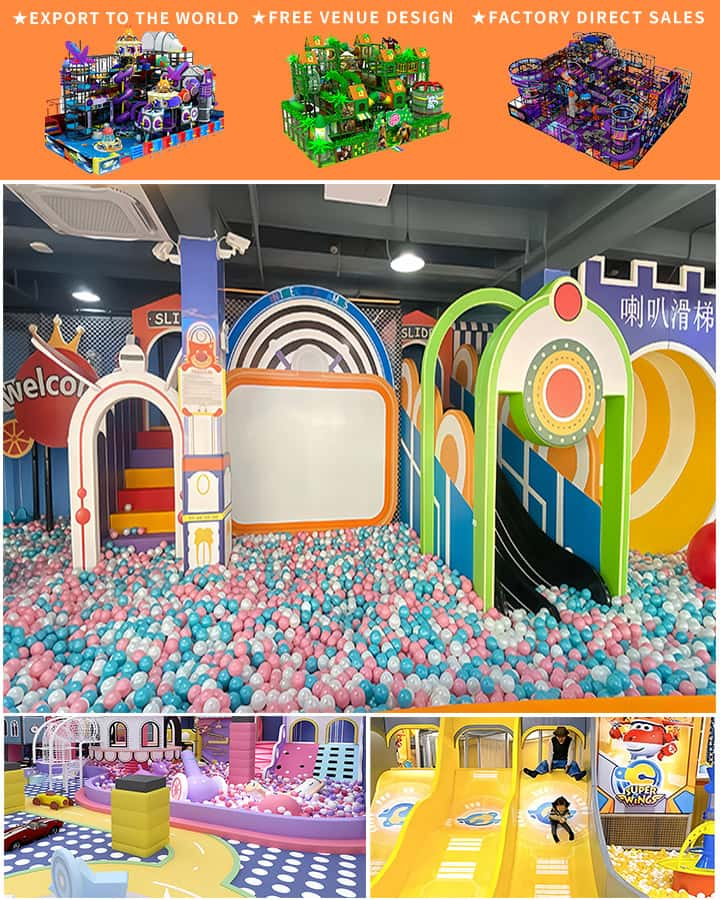Creating an engaging and stimulating playground is essential for the physical, social, and cognitive development of school children. The right mix of playground equipment can inspire active play, foster creativity, and provide a safe environment where students can learn through fun. This article explores a variety of innovative playground equipment ideas that can transform any school’s recreational area into a hub of activity and learning.
1. Multi-Activity Climbing Structures
Climbing structures are timeless in their appeal but can be elevated with modern twists. Incorporating multi-activity climbing towers with different levels, textures, and angles can engage children of various ages and abilities. These can include cargo nets, rope ladders, and rock climbing walls to challenge kids’ physical strength and problem-solving skills. Adding themed elements like castles, pirate ships, or jungle gyms can further spark imagination.
2. Inclusive Playground Equipment
An inclusive playground ensures that all children, regardless of their physical abilities, can participate equally. Installing wheelchair-accessible swings, sensory play panels, and adaptive spinners and carousels can make the playground more accommodating. Surface materials should also be carefully chosen to ensure they are safe and accessible for children using mobility aids.
3. Nature-Inspired Play Areas
 Bringing elements of nature into the playground can create a calming and educational environment. Consider installing a living green wall, sandpits with natural materials, or water play areas that mimic natural streams. Treehouses, log steps, and balance beams made from recycled wood can encourage children to connect with nature while developing their motor skills and balance.
Bringing elements of nature into the playground can create a calming and educational environment. Consider installing a living green wall, sandpits with natural materials, or water play areas that mimic natural streams. Treehouses, log steps, and balance beams made from recycled wood can encourage children to connect with nature while developing their motor skills and balance.
4. Interactive Learning Panels
Interactive learning panels can be both entertaining and educational. These panels often come with touch-sensitive screens or buttons that activate sounds, lights, or even simple games. They can teach basic concepts such as numbers, letters, shapes, and weather patterns, making learning a fun part of outdoor play.
5. Musical Instruments Area
A section dedicated to musical instruments can add a creative dimension to the playground. Installing oversized drums, xylophones, chimes, or even a small outdoor stage where children can perform encourages musical expression and cooperative play. This not only enhances fine motor skills but also builds confidence and teamwork.
6. Shaded Seating Areas
Comfortable seating areas with adequate shade are crucial for resting and social interaction. Installing benches, swings, or hammocks under shelters or canopies provides a space for children to relax between activities. These areas can be designed with colorful mosaic tiles or engraved tablets featuring educational content, promoting quieter forms of learning.
7. Modular Play Systems
Modular play systems offer versatility and adaptability to fit the evolving needs of a school’s student body. These systems can be reconfigured to create different play experiences, from simple climbing setups to complex obstacle courses. Including slides, tunnels, and balance beams within these modular units ensures a wide range of physical challenges and enjoyment.
8. Adventure Trails
Adventure trails are excellent for developing coordination and agility. These trails can feature balance beams, stepping stones, crawl-through tunnels, and rope bridges set amidst natural landscapes. Such trails not only provide physical exercise but also encourage strategic thinking and risk assessment.
9. Educational Gardens
Integrating a small educational garden within the playground allows children to learn about plant growth, sustainability, and the environment. Gardens can include raised beds, vegetable patches, and native plants, along with signage explaining different species and ecological concepts. This hands-on approach to learning nurtures responsibility and curiosity.
Conclusion
Incorporating these innovative playground equipment ideas can significantly enrich the school experience, offering diverse ways for children to learn, play, and grow. By blending traditional play elements with modern educational tools and inclusive designs, schools can create vibrant, engaging, and safe playground environments that cater to all students. Investing in thoughtfully designed playgrounds ultimately cultivates healthier, happier, and more creative young minds ready to embrace future challenges.




